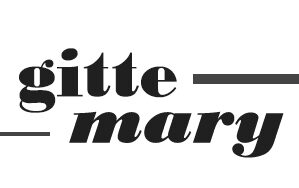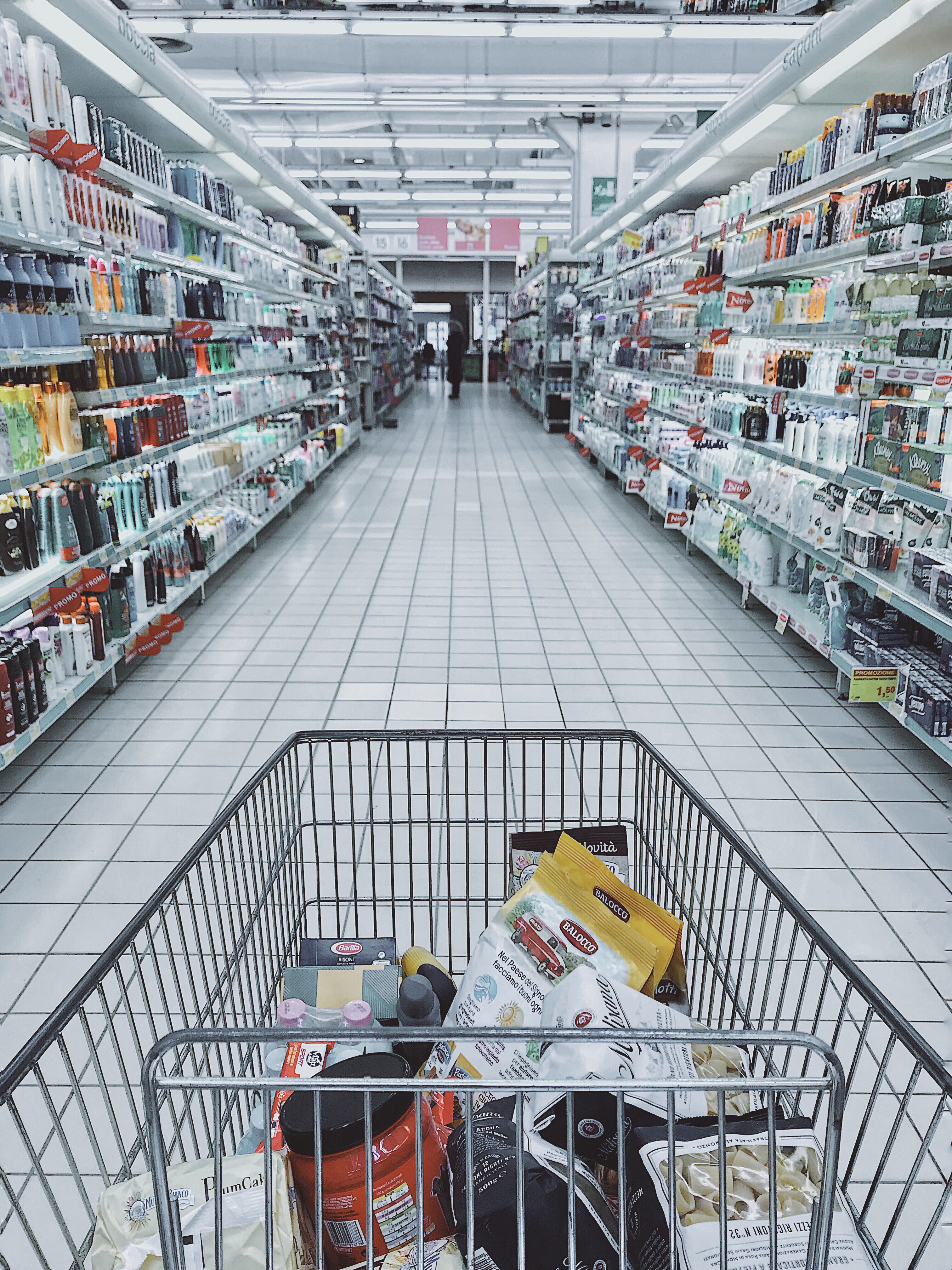Hello everybody! This has been in the making for a long time but I wanted to make sure that it was as thorough as possible before sharing it, and we are at a point now, where I think it’s ready. This post will also gradually be updated with new certificates and projects, so I hope you’ll be able to use this as an overview that will make it easier to navigate products, packaging, production, and brands. There are basically hundreds of certifications, and even more “certifications” and with so many, it can be almost impossible for consumers to figure out what they mean, what they represent, and perhaps most importantly, what they don’t mean.
Studies show that consumers are generally more likely to choose a product with a certification label, as such the certification practice is adopted by companies voluntarily to improve and boost sales. With the sustainable agenda, certificates have also helped consumers navigate the green claims of companies; certification is thus a tool to avoid making empty greenwashing claims, however, it might not be so simple that a certificate = no greenwashing, especially not considering that many consumers don’t always know what the certificate represents, that some companies might imply a certificate means something that it doesn’t or that a company will create symbols and labels that mimic respected certificates in order to benefit from the increasing consumer interesting in sustainability.
Also check out: Eco Brands I Stand By // a list of sustainable fashion companies
Other points to consider:
- Many certifications are expensive, which automatically exclude certain companies from getting them, in some cases, a company can be more sustainable than the ones who can afford the certificate
- Certification alone is not an effective way to ensure environmental change, political actions like bans, taxes, and top to bottom regulation of supply chains are also important tools that can help guide/force certain companies to improve their business practices
- Not all certifications are created equally, and as a consumer, it can be hard to distinguish between solid third-party programs, vague third-party programs, and an in-house green label with no external inspection or regulation, this is why we need this list, heH.

BUSINESS CERTIFICATES (and programs)
B Corp:
Certified by B Lab, the B Corp is a general certificate, which is founded on the belief that good and ethical businesses have to assist governments and NGOs’s in solving problems of poverty, inequality, and climate change. B Corp certified businesses are legally required to create advantages that not only benefit the profiteers and shareholders of the company but that equally benefit local communities and the planet. B Corps are assessed and certified based on their environmental and social impact, aka when their entire supply chain reflects effort related to sustainability and social responsibly. B Corp has free of all informative materials, and the certification fees start at 1000 dollars and move up with increased revenue. B Corp’s ethos rejects the idea of shareholder primacy and profit over people, which is very rare at this point.
If we are looking at B Corp from a more critical perspective, most of the requirements to qualify for a B Crop certificate are rather vague, so it is not completely straightforward for the consumer to figure out HOW a company is creating benefits for communities or HOW a company is being environmentally responsible. There is also no requirement for a company to publish sustainability reports, so on the website, you can sometimes find proof of change and efforts being made, and sometimes you can’t.
1% for the Planet:
This a project a business can partner up with, but to my knowledge but an actual certificate, however, I still think we should include it because it is often used by both green and non-green companies. This project was founded by Yvon Chouinard, the founder of Patagonia, which is an activewear/outside wear brand that is also pretty sustainable, and what it is, is basically a self-chosen tax. A 1% for the planet company donates 1% of their gross sales to environmental projects. As such the partnership does not really tell the consumer anything about the brand’s own products or about their supply chain, but if you know that the brand has other eco certificates this is a great addition, it just does not say anything about the company’s own sustainability efforts, which in some cases can be misleading and create “ a green alibi” for companies, just like with many carbon offsetting programs (which my impact video on carbon offsetting if you want to know more)s.
Fair Trade:
This is a certification based on price. Companies that are Fair Trade commit to paying farmers a minimum price in case the overall market price falls. Farming practices are also committed to using some of their profit to improve the local communities, like building schools. Basically, Fair Trade is supposed to ensure that people who produce the goods, like coffee or chocolate, but both food and clothing items, are paid fair wages when during so and that the company is obligated to not exploit the farming communities, but rather improve them. But, because there is a but. Research shows that forced child labor has occurred even in the production of Fair Trade products, and in some cases, the wages and working conditions of Fair Trade farms have been lower than on noncertified farms, so the transparency and thoroughness of the certification need work. But the idea of having a third-party verify wages is a good idea, and it is certainly better than what we see with cooperations like Nestle and McDonalds who define their own “fair trade” standards in-house. It is a good idea but there is still work to do for Fair Trade to ensure that their standards are being met.
Guaranteed Fair Trade:
This is not actually the same thing as Fair Trade, Fair Trade is certified by Fairtrade International, while Guaranteed Fair Trade is certified by the World Fair Trade Organisation, although a lot of the same criticisms can be applied here as before, there are also some differences. The WFTO is based on a community of social enterprises and to join, a company has to be audited, assessed, and peer-reviewed. This certificate is more focused on the enterprise level of a business and its impact, where the previous is focused on the product level.
Cradle to Cradle:
Also known as regenerative design, this is a product certification that promotes a design and manufacturing practice that aims to utilize materials in a circular system. The C2C certification is given at different levels ranging from “basic” to “bronze”, “silver”, “golden”, and “platinum”. It includes 5 categories of standards the business has to innovate within: material health, material reutilization, renewable energy, water stewardship, and social fairness. The certification fees are between 1,8k and 15k depending on the company’s revenue. To get C2C platinum-certified a company has to schedule third-party audits, for instance by B Corp, and generally, the higher the C2C level, the more requirements call for external inspections and testing, which makes the system more trustworthy. Does it mean that C2C certified products are always sustainable? Well one of the central concepts in C2C is regeneration and circular economy, which is rematerialization in a closed loop. In many cases, a 100% closed-loop practice is not entirely possible, while resource use on an industry-level and continuous economic growth will always cause environmental harm. However, the certification is well-rounded and a C2C certified company is guaranteed to have removed or reduced these issues from the production (at least to some extend) 1. The use of toxic and harmful chemicals from their supply chain. 2. Significant material waste, as leftover materials and waste products are either used as energy input or repurposed in later production. 3. Fossil fuel-powered factories, as a part of the certification, involves the inclusion of renewable energy. 4. Water pollution, as the company also commit to supporting water-clean ups, as well as aim to avoid water contamination in the first place. 5. Exploitative labour, as the social responsibility aims of C2C values fair wages and safe work environments.
Also check out: 5 TYPES OF GREENWASHING // reacting to greenwashing ads and products
Animal Certifications
“PETA Approved”
This is a certificate given by PETA that ensures that the products of a company are vegan, to receive it, the company has to fill out a short questionnaire and pay an annual fee of 250 dollars. Now the certificate makes it easier for consumers to recognize vegan products in a store, which always makes life easier, so for that, it does its job, however, I am not the biggest fan of PETA, some of the strategies are counterproductive, directed at the wrong topics or just executed really badly. Do they do good things? Yes, but in my opinion not exclusively. The certificate also has nothing to do with further sustainability other than the exclusion of animal products, which is great but says very little about the supply chain and sustainability efforts of a product. What I am saying is, if a billion, or even a million-dollar company’s only green effort is making their products vegan, there is a long way to go in terms of materials, manufacturing, recycling, waste managing, community support, wages, and so on.
Also check out: Watch, Listen and Read This // about veganism
Leaping Bunny:
This is given by the non-profit Cruelty-Free International, which ensures that no animal testing has been utilized during the production and design of a product. This one is a lot more thorough than the PETA certificate, it requires supply chain check-ups down to the ingredient and manufactory levels with third-party verification. I think it goes great together with other certificates because it is a great addition to a larger sustainable effort, however, I also see it given to companies that exploit workers, pollute fresh water and create unnecessary plastic packaging. Because this is a cruelty-free certificate it is given to companies that participate in ending animal exploitation, which is a good thing all around, of course, so use it to recognize vegan products if you are having a hard time navigating the selection. I would also value this certificate over the PETA-approved one, simply because it requires more through supply chain action to get it.
Certified Humane:
This is an American certificate administrated by The Humane Farm Animal Care (HFAC) and should ensure a higher standard of animal practice in the agricultural food sector. When a farm applies to be certified the HFAC sends employees to insect the farm, in chicken farms for instance battery cages and debeaking are not permitted. However, the general standards for certified animal welfare are still very low. The standard “humane” separation time of cow and newborn calf is 24 hours. HFAC also states that any farm can be Certified Humane regardless of its size. Furthermore, even farms that do have grass-fed and free-range livestock still propose a huge environmental problem as the areas taken up by animal ag far supersedes the areas it would require to grow plants for humans, and pushing for more farms to go free-range would require even more space, as such it seems untransparent to not include the notion of downsizing the animal sector, as an organization protecting livestock. Needless to say, I don’t think it is possible to produce the amounts of meat that we are today and call it humane, and while certificates that disable the worst types of practices is a good thing, the name is misleading and help create a false narrative of what factory farming looks like.
Also check out: The History and Impact Animal Agriculture & Factory Farming // from 45,000 BC to 2021
Marine Stewardship Council Standards (MSC):
This is an international non-profit that describes itself as a labeling system that recognizes sustainable fishing practices. It was actually formed by WWF and Unilever in the ’90s. A 2012 UN report showed that 30% of the world’s wild fisheries are overexploited and that 57% of closing in on their limit, the MSC certified fishing practices account for about 10% of the global production and they describe their objective as enforcing sustainable fishing practices that make fishing infinitely possible. The MCS does not actually certify anyone themselves but outsources that to 12 third parties. However, there are issues, although the MSC is a non-profit only part of their budget comes from grants and donations, the majority comes from their licensing fees, which can exceed 150k for a company to become certified. Before 2006 only 7% of their revenue came from licenses, however now it is more than 50%, which can prose some ethical questions about transparency and interest in profit by allowing bigger companies to license their label even though their standards might be lower. Several experts have also questioned the MCS’s commitment to the environment and claim their focus is increasing on doing good business. The MSC also certifies some fisheries with “conditions” meaning that they get the blue label but have to work towards meeting the standard going forward, as such the label misleadingly implies that the seafood with the label IS sustainable, when in fact it might BECOME sustainable later. Lastly, a big issue in the fishing industry is plastic waste, with more than 46% of ocean plastic being related to the fishing industry, and the MSC has no plan of action or standard for waste management and ghost gear pollution.
Textile and care certifications
GOTS (global organic textile standard):
The GOTS standard was developed in 2006 by a working group of four organizations: The International Association of Natural Textile Industry, Japan Organic Cotton Association, the Organic Trade Association, and the Soil Association. The certificate is available on two levels. One level ensures that a product contains more than 95% organic material. The other level ensures between 70-94% organic materials, and in this case, the exact percentage has to be disclosed on the GOTS label. The GOTS label certifies the entire supply chain, and the entire process of making a garment (processors, spinners, weavers, dyers, and all other aspects), and not solely the final product, which makes this one of the best organic textile certificates, and definitely one to look for.
Also check out: TTHE ENVIRONMENTAL IMPACT OF COTTON // + is organic cotton ACTUALLY better?
As part of the labeling requirement, in addition to the GOTS logo, the license number (or name) of the certified supplier database must be included, so consumers can look up the information for the item they have purchased.
OEKO-TEX:
Oeko-tex is an umbrella term that covers three different types of certificates: standard-100, Leather and Made in Green. The most well-known is probably the standard-100, this certificates tests for harmful substances in the garments, and ensures that the garment approved by the standard do not pose a threat to human health. The Leather certificate has a similar goal, but because textile production and leather tanning are two vastly different processes, they’re separated. The Made in Green goes beyond both the standard-100 and the leather label and seeks to ensure sustainable and socially responsible production practices as well.
It is important to note here, that the most well-known, and most frequently used oeko-tex standard-100 does not ensure sustainable business practices, nor fair wages or safe working environments – it only ensures that there are no traces of dangerous chemicals in the clothes we buy. Which is good news to our health, but I seriously need brands to stop advertising their oeko-tex certificate as a form of “look how green we are”, that’s not really what the standard-100 is testing for, at all.
Better Cotton
BCI, or Better Cotton Initiatives was founded at the beginning of the 2000s by WFF and a series of commercial brands like to optimize cotton production, among the founder are Addidas, IKEA, H&M, and Gap inc. BCI does not actually guarantee organic practices but provides a platform that helps manufacturers and farmers move towards more sustainable methods. BCI provides training and guidance and helps set goals related to pesticide use, water, and wastewater management, soil health, biodiversity as well as wages, and working conditions. As such, when buying a cotton product supported by the BCI you’re not necessarily buying a more sustainable product, it might be better in the future, and it is definitely a step in the right direction, but in terms of supply chain transparency and guaranteed sustainability, this is not as good as GOTS.
Timber and sustainable forestry certifications
FSC (Forest Stewardship Council):
The Forest Stewardship Council was founded in 1993 was the 1992 Rio Earth Summit failed to reach a global sustainable forestry agreement to reduce deforestation. The Forest Stewardship Council promotes and encourages more sustainable forestry. Their label indicates that the wood-derived materials in a product were sourced sustainably; preserving biodiversity, and supporting local communities. There are three different FSC labels: 100% of materials in a product sourced by FSC certified forest management practices, mixed products contain FSC certified wood and recycled materials, and recycled products containing both post-and pre-consumer content. (post-consumer recycling is of course the one that we want). When becoming FSC certified, a company submits an application, then they choose a third-party auditor to assess the production and material sources. So several social and environmental groups, along with companies in the industry formed a voluntary system that should encourage the rest of the industry to push for more sustainable timber.
Sadly, some reports show that the FSC certification has been less than successful in reduced tropical deforestation. There are also several scandals that show how FSC timber has been linked to the trafficking of illegal timber. In 2014, it was reported that FSC certified loggers in Russia harvested timber from areas that were under legal protection. In 2015, a Chinese company marketing in the US offered to put an FSC label on illegal wood in exchange for a 10% markup. The same year a report showed that the FSC certified Austrian company Holzindusrie Schweighofer logged illegal wood in national parks in Romania. In 2016, in Peru, reports showed that 90% of the timber on two shipments from the Amazon headed for the US and Mexico was of illegal origin, and the company still includes on their website that they comply with FSC criteria even though their certification was suspended in 2017 – they are not also banned from the US market.
The NGO Environmental Investigation Agency has conducted the reports mentioned here, as well as many others, and without specifically targeting FSC practices, the FSC appeared in many illegal timber cases. Furthermore, while the original goal of the FSC was to preserve tropical rainforest very few if their certified logging companies operate in tropical areas, but more so northern America and Europe. One reason might be that it is expensive to get certified and most companies in South America can’t effort it, as such FSC ends up kind of rewarding those companies who by default often has a lower carbon footprint because they source timber from areas with more efficient logging policies when they should actually be helping companies in the areas that do not have those laws in place, but that’s not what they are doing and that is a problem.
Allen Blackman, an economist at Resources for the Future and lead author of a 2015 study on FSC certification in Mexico, argues that FSC may also have had little effect on deforestation for the simple reason that a lot of the deforestation in developing countries is not happening associated with forestry operations. Instead, the driving factor is illegal land-use change, meaning conversion of natural forests to palm oil plantations, commercial agriculture, and ranching. I think looking for FSC products is a great start, but there is a lot of work to be done here still, and the FSC label certainly won’t excuse unnecessary consumption or waste of wood and paper products. There are of course cases where the FSC standard is much higher than competitors, but as we can see, it is not guaranteed, and if the FSC do not up their game and seriously turn around their certifying body, they are very likely to turn into a greenwashing scheme, to the extent that it hasn’t already happened.
Rainforest Alliance (and UTZ):
In 2018 Rainforest Alliance and UTZ (Universal Trade Zone) merged under the Rainforest Alliance banner. The Rainforest Alliance Certified seal means that some or all of the ingredients are sourced from farms that comply with the standards of the Sustainable Agriculture Network, which aims to promote sustainability in farming and protect farmers, forests, wildlife, and local communities. The seal is verified through on-farm inspections. There are several fees related to the certificate from the costs of the on-sight inspections, to a royalty system for each unit of certified product. The green frog label can be found on coffee, cocoa, tea, nuts, fruits, oils, and herbs. A Rainforest Alliance Certified farm is one that complies with 10 standards set in place by the Sustainable Agriculture Network
As of 2019, 80% of the RA-labeled products contained 90-100% certified ingredients, furthermore, the RA started introducing stricter requirements in 2020. The RA has a lower requirement for certified palm oil, a product must contain only 30% certified palm oil to carry the label, according to the Rainforest Alliance website it is due to the limited number of palm oil farms in the world, which is much lower in comparison to the number of coffee or banana farms. Herbal teas, products must contain at least 40 percent of the certified ingredients.
In terms of requirements not being met, guidelines not being followed, RA’s new policies prohibit the label from decertifying farms, and that compromising consumer transparency. There are also no set timeframes for farms to commit to RA standards, and there is very little data to show individual farming improvements. Furthermore, while RA has implemented workers’ rights in their standard, they have not coursed action to protect farmers from price volatility, like for instance, Fair Trade does. The organization has also watered down many of UTZ and Rainforest Alliance’s previous requirements, including those on overtime, payment in kind, maternity leave, and preference for organic fertilizers.
RSPO (sustainable palm oil):
In 2004 RSPO was founded. Roundtable on Sustainable Palm oil created a sustainability certification system which means to integrate sustainable policies into the industry. The RSPO has been named “the best in class among standards” by WWF when it comes to certified sustainable palm oil.
Also watch: the environmental impact of palm oil
However, the policies of RSPO has been criticized by several scientists and news platforms, because of the lack of assurance of the results of their policies, for deliberating formulating vague and imprecise criteria, for the being corrupted by industrial interests rather than ecological and for protecting the corporations who fail to meet their sustainability goals like Johnson & Johnson and Kraft-Heinz, who supposedly are “sustainable” RSPO members but refuse to give insight into their “sustainable” production.
It took 14 years for the RSPO to ban its members from destroying forests – which it finally did in November 2018. It still hasn’t enforced this new rule – and RSPO members are still destroying forests and getting away with it. RSPO members were right at the center of Indonesia’s 2015 forest fire crisis. In 2019, roughly three-quarters of the fires linked to palm oil companies were on RSPO members’ land. This means that so-called ‘sustainable’ palm oil growers are – in some cases – at the forefront of Indonesia’s environmental crisis. A 2019 report by the Environmental Investigation Agency and the Malaysian organization Grassroots reveals that the RSPO is “effectively giving false environmental credibility to its products”. The report uncovers fraudulent auditing of oil palm plantations, primary forests cleared to make way for plantations, and community rights being violated.
Now it should be mentioned that producing palm oil actually requires fewer resources than other types of oils, for instance, the impact would be even bigger if we started producing olive oil to replace palm oil. The issue lies in the massive overconsumption of it, it is used in countless food products, is used to make biofuel. A step towards solving these problems is to ban certain products from using palm oil, to avoid it being overused, certification is a good step in that direction but unfortunately, this industry, and the companies who benefit from it, have very low standards for what “sustainable” means.




